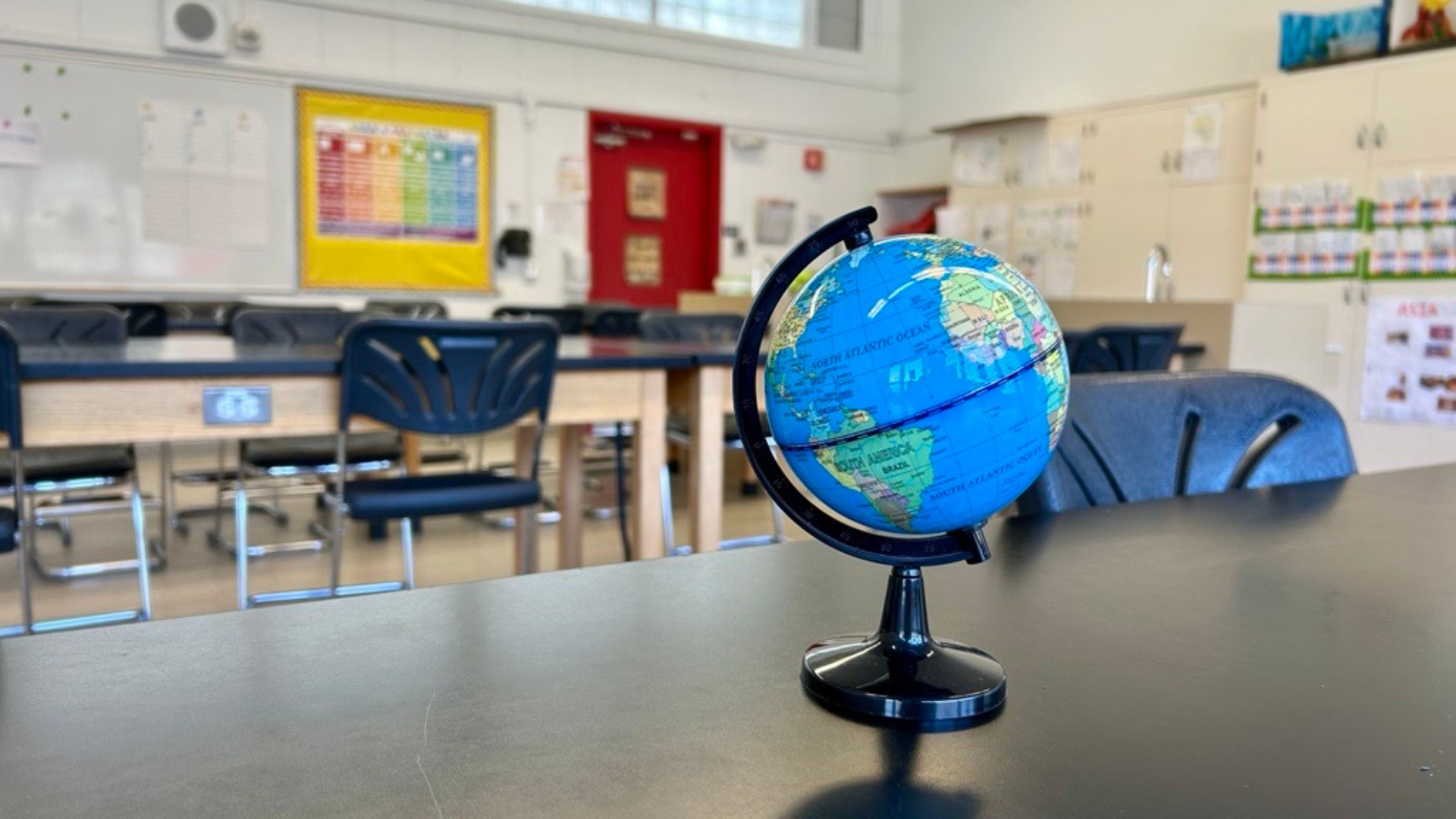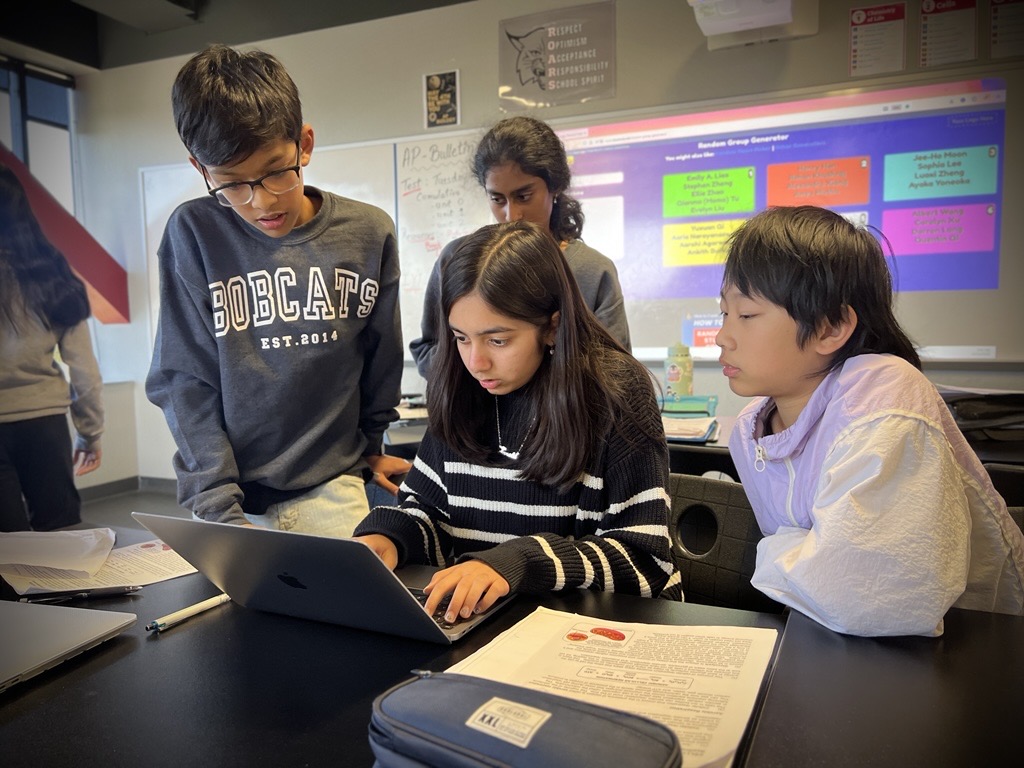October 8, 2024


“Why Latin?” is a common question we receive every year when families look at our curriculum. The study of Latin as a World Language course starts in Grade 5 and continues through Grade 6. Beginning in Grade 7, our students choose their own World Language course and those interested in advancing their Latin understanding can continue to take it from Grade 7 to their senior year of high school.
There is no one better equipped to answer the question, “Why Latin?” than one of our own Subject Expect Latin Teachers, and Teacher Mentor, Ms. Odell.
Ms. Odell received an Honours Bachelor of Arts degree from the University of Toronto, and also earned the Wilson Medal in Classics from Victoria College. Receiving her Master of Arts degree from the University of British Columbia, her research was funded in part by a Canada Graduate Scholarship from the Social Sciences and Humanities Research Council of Canada (SSHRC). She joined BASIS Independent Silicon Valley in 2016.
When asked, “Why Latin?” Ms. Odell responds, “As a Latin Subject Expert Teacher, my goal is to instill a love of Classics and Latin language learning in my students,” says Ms. Odell. “There’s a perception that Latin no longer has anything to offer students in our technology-driven world, but the Latin texts my students read have been copied and preserved for two thousand years for a reason! They have lasting wisdom and values for my students to read, learn, and question.”
Why do we teach Latin in Grades 5 and 6? What is the benefit?
“Students at BASIS Independent Silicon Valley study Latin in Grades 5 and 6 because it helps shape them into well-rounded students with a strong knowledge of western history, literature, and language. Western society has been shaped by Roman ideas and ideals for two millennia; learning the language, history, and mythology of the Romans helps our students to understand the structures Romans have contributed to our own society. It also aligns with their history curriculum in Grades 5 and 6, which focuses on ancient cultures.
In BISV’s middle school courses, students learn Latin using the reading method: students are presented with scaffolded readings to illustrate new concepts, and they’re able to deduce the meanings and structure from the context. This inquiry-based method nurtures critical thinking and analytical skills, as well as teaches students Latin.”
How does Latin elevate critical thinking and creativity?
“The way we study Latin elevates critical thinking by forcing students to think precisely about the way words interact with other words. In English, we are deeply reliant on word order to render the meaning of a sentence–if I scrambled up all the words in a given clause, it would mean something completely different! But in Latin, that isn’t the case–Latin instead uses noun endings (called cases) to indicate what each word does in a sentence.
All this means that students can’t necessarily translate by reading a sentence straight across–they need to consider each word and what its ending tells us about its role in the sentence. They get very quick at this precise kind of thinking as they read more and more Latin throughout the year. This helps students appreciate the detail of language, and the different ways languages can express similar ideas.”
What inspired you to learn Latin and teach it?
“I took Latin for the first time more or less on a whim–originally I had wanted to be an English major, but I could only get into one English class in first year university. I picked Latin just to fill out my course load because I had always been interested in the Romans and also because I’m not very practical (my dad said to take economics instead). I fell in love with Latin over that first year of study in part because I loved how clear and precise Latin could be. It’s very rule-based and predictable, which is so nice compared with all the shenanigans English gets up to. I took additional Roman culture and history classes in my second year, and that additional pursuit crystallized for me that I wanted to study the Romans.
I think it’s amazing that our students have the opportunity to study Latin at such a foundational age, rather than waiting until college, as I did.”
How does Latin connect with the other subjects that students are taking in Grades 5 and 6?
“Latin connects primarily with students’ history classes in Grades 5 and 6. Grade 5 students take a course in Classics three days a week, where they learn all about Egypt, Mesopotamia, Greece, and Rome. Grade 6 students take a class in world history, which covers those time periods in greater scope. Meanwhile, in Latin class, we learn about Roman culture and mythology. This cultural and linguistic context helps flesh out their history learning, while the history shapes their understanding of where Latin fits in the ancient world.
Latin also connects with students’ English curriculum when it comes to grammar and vocabulary. I love that my Grade 6 students already know all about the difference between simple, progressive, and emphatic aspects so that we can use that knowledge to help us with our Latin translations; I like to think I reinforce that knowledge by using it in our classroom as well.
In terms of English vocabulary, the overlap is enormous! More than half of English words have Latin roots; by learning the Latin words, my students become better at learning new English words, and at deducing the meaning of new words for themselves (like deduce, which comes from duco lead, and de from–when you lead an idea from something, you’ve deduced it).”
What field trips, projects, and fun things are you planning this year?
“Together with our high school Latin teacher, I advise the BISV chapter of NJCL–National Junior Classical League. We prepare our club members to write the National Latin Exam in March by learning all about the Romans. Since students get the grammar study they need in class, we reserve our monthly club meetings for exploring extra topics related to Roman culture and history.
At a typical meeting, for instance, we might learn all about what a day at the ludi (games) would look like for a Roman: beast fights in the morning, executions at lunch, and gladiator fights in the afternoon. We might talk about the different kinds of beast fights Romans enjoyed: Romans might see a staged hunt, where the arena is transformed into a forest, and riders on horseback hunt a deer, or they might see a lion and a bear fighting one another on the sands. We could also talk about all the different types of gladiators and the most popular match-ups: Romans loved to see equal-but-opposite fighting pairs, like a heavily armed secutor (with a heavy helmet, shield, and sword) facing off against the lightly armed retiarius (with only a trident, a net, and a shoulder guard).
Over 85% of our National Latin Exam students received a certificate or medal on their exams in the 2021 – 2022 school year, and four students earned book awards for having 4+ years of gold medals.
We are so proud of our Bobcats and all their accomplishments in the field of classics!”
BASIS Independent Silicon Valley is a TK – Grade 12 private school, providing students with an internationally benchmarked liberal arts and sciences curriculum, with advanced STEM offerings. Considering joining the Bobcat community? To join our interest list for the next school year and receive admissions updates and more, please click here.


